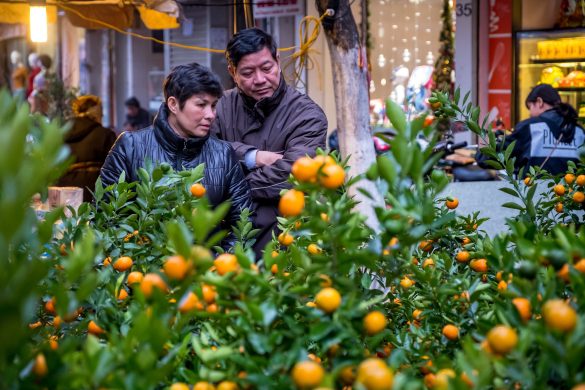U-landene er afhængige af at bevare gode egenskaber hos husdyrracer, der trues af uddøen
ROME, 21 July 2011: Germany, Norway and Switzerland have contributed a first donation of 1 million US dollar to a new, FAO-managed fund designed to help developing countries conserve and sustainably use their livestock breeds.
The fund will provide financing for individual projects submitted by countries in support of the internationally-agreed Global Plan of Action for Animal Genetic Resources (se link neden for).
The plan, adopted by all FAO member countries in 2007, has become a key instrument for the conservation and sustainable use of animal genetic resources at global, regional and national level.
Innovative selection process
Any developing country may put forward projects for financing by the fund, which is due to become operational in September.
– The money will be disbursed on the basis of letters of agreement between applicant countries and FAO, following an innovative, transparent and impartial selection process led by FAO’s Commission on Genetic Resources for Food and Agriculture, says Linda Collette, the Secretary of the Commission.
Some 21 percent of the world’s more than 8.000 livestock breeds are classified as at risk of extinction. But since the Global Plan of Action went into force, countries’ reporting on breeds’ population status is improving and points to a slowing of the reported rate of extinction.
Livestock policies
Several countries are currently revising their livestock or breeding policies and strategies.
16 countries have so far endorsed national strategies for improved animal genetic resources management, and according to informal surveys, 22 more national strategies are in process of development and 15 more are planned.
Regional organizations, for example AU-IBAR in Africa, have included use and conservation of genetic resources in their newly developed strategic plans. Such concerted efforts are bearing results already.
A wide portfolio of animal genetic resources is crucial to adapting and developing agricultural production systems to meet the challenges of climate change and growing world population. Other contributions to the fund will be needed from different sources, including from the private sector.
Major achievement
– The adoption of the Global Plan of Action for Animal Genetic Resources, the first internationally agreed framework for the management of livestock diversity, was a major achievement – a milestone for the livestock sector and for the management of agricultural biodiversity, says Irene Hoffmann, Chief of FAO’s Animal Genetic Resources Branch.
– Since 2007, it has become a key instrument for the conservation and sustainable use of animal genetic resources at global, regional and national levels and created important momentum in many countries, adds she.
Countries demonstrated their interest in the Global Plan of Action by translating it into 9 languages serving around 20 countries – and it is currently being translated into another 12 languages. This will increase awareness of sustainable management of animal genetic resources among stakeholders.
Countries are taking important steps in its implementation, although at different speeds and with different priorities.
While developing countries aim to strengthen linkages between genetic diversity, livelihoods and food security, several developed countries highlight the links between genetic diversity and landscapes, and focus their activities on development, labelling and marketing of high-value products.
Man kan se mere om den store bevaringsplan for verdens truede husdyrracer – alt fra kaniner til geder, får, svin og kvæg – via http://www.fao.org/news/story/en/item/82260/icode
Tilføjelse U-landsnyt.dk:
Bidragene fra Tyskland, Norge og Schweiz til den betydningsfulde fond, der skal støtte u-landes indsats for at bevare traditionelle husdyrracer, offentliggøres i anledning af mødet FAO’s Kommission for genetiske ressourcer (Thirteenth Regular Session of the Commission on Genetic Resources for Food and Agriculture, CGRFA), der holdes 18.-22. juli i FAO i Rom.
Danmark er fast medlem af CGRFA og repræsenteret på mødet ved eksperter fra Plantedirektoratet (Lars Landbo og Helle Anette Palmø) og Fødevareministeriets faste repræsentant ved FAO.
CGRFA-kommissionen om Plantegenetiske Ressourcer for Fødevarer og Landbrug er et permanent forum, hvor regeringsrepræsentanter for 172 medlemslande diskuterer og forhandler om spørgsmål af relevans for biodiversiteten for fødevarer og landbrug.
De vigtigste mål for Kommissionen er at sikre bevarelse og bæredygtig udnyttelse af genetiske ressourcer for fødevarer og jordbrug, samt rimelig og retfærdig fordeling af fordele afledt af deres anvendelse, for nuværende og kommende generationer.
Biologisk mangfoldighed i fødevarer og landbruget er blandt Jordens vigtigste ressourcer. Afgrøder, husdyr, vandorganismer, træer, mikro-organismer og hvirvelløse dyr. Tusindvis af arter og deres genetiske variation udgør nettet af mangfoldighed i de økosystemer, som verdens fødevare- og landbrugsproduktion er afhængig af.
Denne biodiversitet er uundværlig, hvad enten det er insekter, der bestø-ver planter, mikroskopiske bakterier, der er nødvendige for fremstilling af ost, forskellige racer af husdyr, der er nødvendige for at opretholde livet, selv i de hårdeste miljøer, eller de tusindvis af afgrødesorter, der skal til for at opretholde fødevareforsyningen på verdensplan.
I årtusinder har mennesket brugt og udviklet biodiversitet for fødevarer og landbrug.
Situationen er desværre, at biodiversitet og genetisk mangfoldighed er gået tabt i alarmerende tempo. Med erosionen af disse ressourcer mister menneskeheden muligheden for at tilpasse sig nye socio-økonomiske og miljømæssige forhold, såsom befolkningstilvækst og klimaforandringer.
Nærmere om mødet i CGRFA på http://www.fao.org/nr/cgrfa/en
Mødet kan videre følges hele ugen på http://www.iisd.ca/biodiv/cgrfa13
Kilde: Sitet for FNs Fødevare- og Landbrugsorganisation (FAO)














